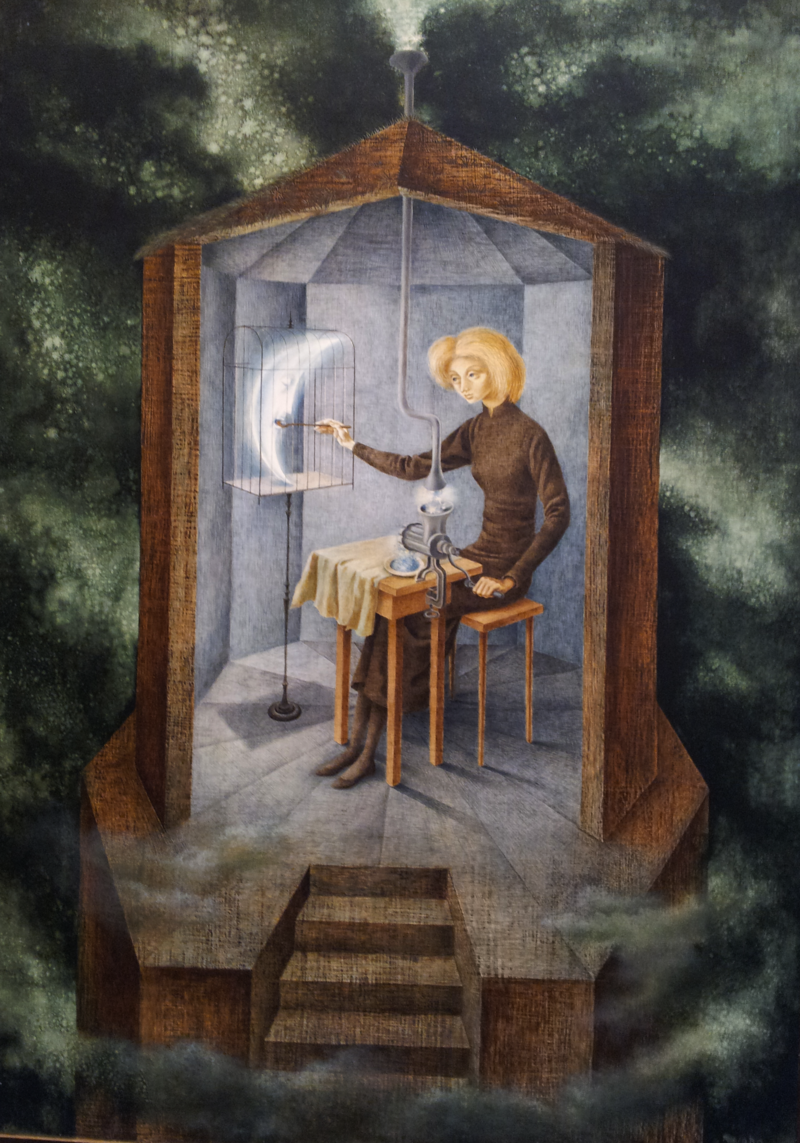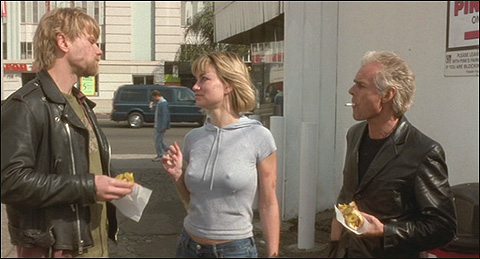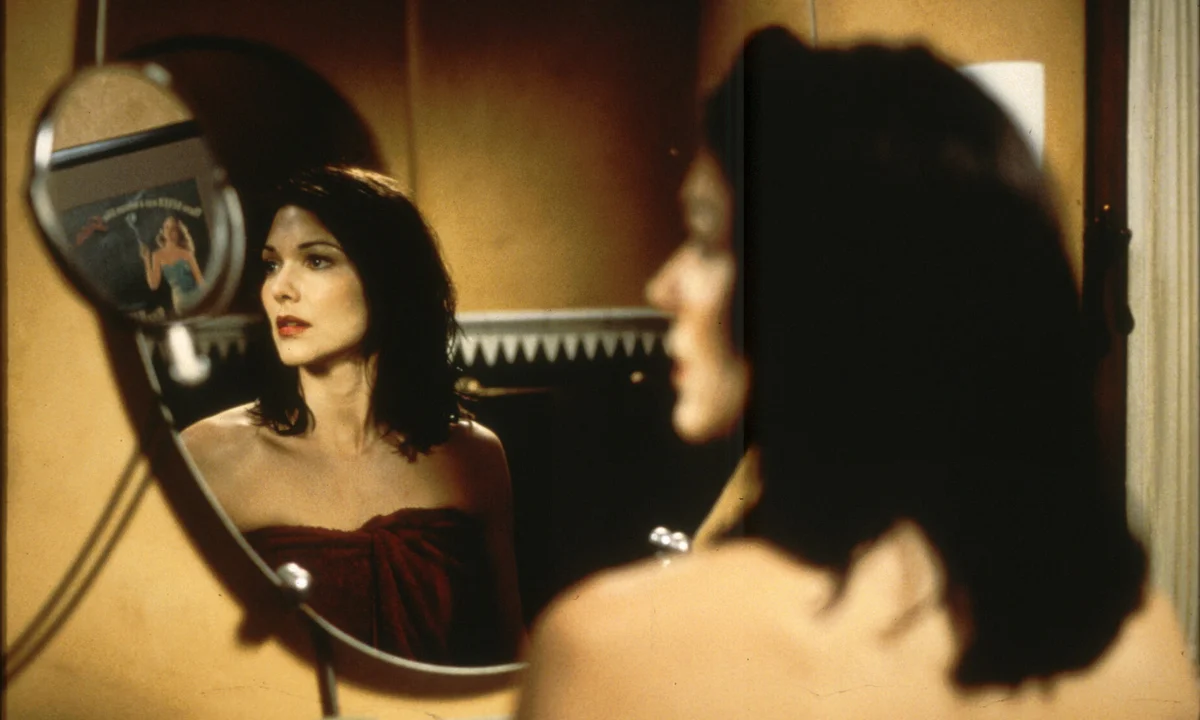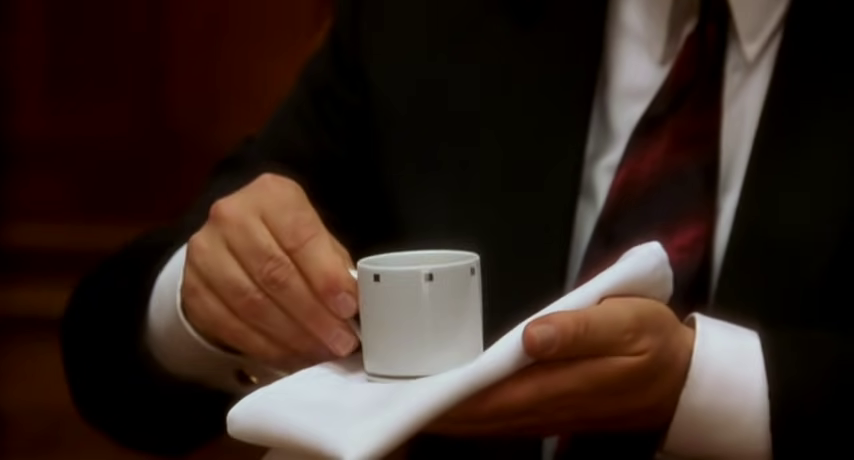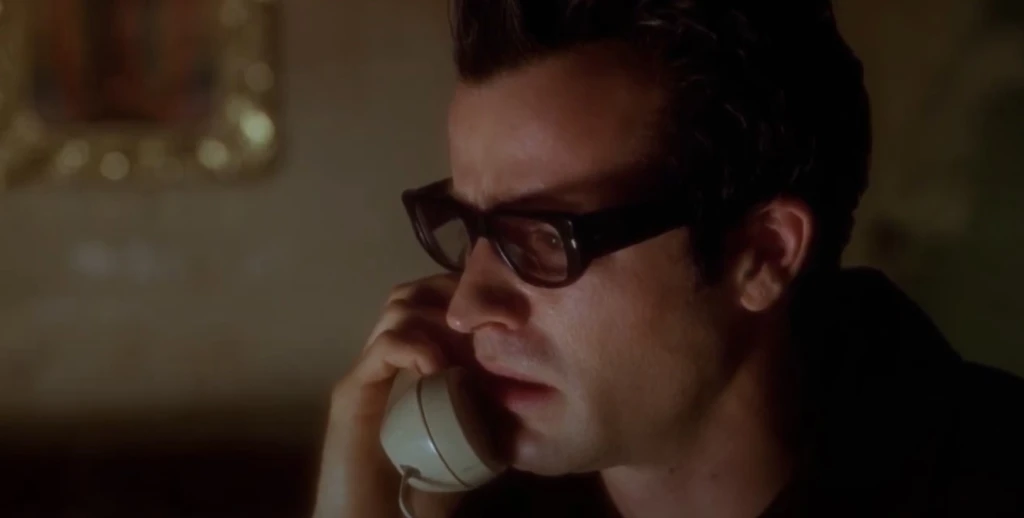The Surrealism of Mulholland Drive
- Scott Barnard

- Mar 24
- 8 min read
Updated: Sep 8

David Lynch, Mulholland Drive, and the Surrealist Revolution
Introduction
Picture a Hollywood where dreams twist into nightmares, where the glitz of fame hides a sinister underbelly. In 2001, when blockbuster-driven films like The Lord of the Rings dominated cinemas with linear spectacle, David Lynch unleashed Mulholland Drive, a rejected TV pilot reborn as a cinematic masterpiece. Its surrealist ambiguity stood as a bold counterpoint to the era’s predictable narratives, challenging audiences to dive into the unknown. Blending dream logic with a scathing critique of the Hollywood dream, Lynch plunges viewers into a kaleidoscope of identity, desire, and dread. Drawing on Surrealism’s obsession with the unconscious, Mulholland Drive defies traditional storytelling, using non-linear narratives, uncanny imagery, and haunting symbols to probe the human psyche. Unlike conventional films, it doesn’t spoon-feed answers - it invites audiences to become detectives, unraveling its mysteries through clues (which Lynch provided in the DVD release). This essay argues that Mulholland Drive revolutionises cinema by embodying Surrealism’s ideals, exposing Hollywood’s dark truths, and embedding itself deep in our subconscious, and left a legacy that is still haunting.
Surrealism and Lynch’s Vision
"Great cinema goes deep into the psyche." - David Lynch
Surrealism, born in 1920s France, sought to liberate the imagination by tapping the unconscious mind. Inspired by Sigmund Freud’s theories of dreams and free association, Surrealists like Salvador Dalí and Max Ernst embraced automatism - creating without conscious control - to reveal hidden desires, fears, and a “super-reality” where dreams and reality merge. Their 1924 manifesto called for rejecting traditional values and exploring the irrational, aiming to uncover the psyche’s depths. David Lynch, though not a strict Surrealist, channels these ideals in Mulholland Drive. “I love the idea of the Surrealists and the world they opened up,” Lynch told The Paris Review, citing their focus on the subconscious as central to his work. And Lynch is an amazing artist. I evaluate artists in terms of levels: Level 1 artists will literally say what they are representing, Level 2 artists will make a stereotypical representation, while Level 3 artists will affect the audience on an emotional level. Think of it like you're the artists and you want to coney the emotion 'sadness'. You could just tell people "This is sadness", or go to the next level and draw a sad face, but a level 3 artist will get their viewer to feel sadness - not mearly represent it. And then there's David Lynch, and artist who went to a whole other level!
In Mulholland Drive, Lynch employs dream logic, where events unfold without clear cause-and-effect, mirroring the subconscious’ fluidity. The film’s non-linear narrative jumps through time and space, creating a disorienting, dreamlike quality that defies 1990s TV’s predictable plots and cinema’s linear norms. Lynch’s uncanny atmosphere marked by ambiguous characters and shifting settings, like a “floating” camera gliding through eerie spaces, evokes Surrealism’s irrationality. By rejecting traditional storytelling, Lynch liberates the imagination, crafting a cinematic experience that speaks to viewers’ subconscious, much as Surrealists intended.
Themes and Hollywood Critique
"This is the girl." - Motif said by multiple characters
Mulholland Drive uses Surrealism to explore themes that expose Hollywood’s illusions and probe psychological truths, redefining cinematic narratives. Identity is central: characters like Diane, Betty, and Rita, are multiple personas of the one person, reflecting how individuals craft alternate selves to escape reality and in this case, represent the disasterous effects of chasing the Hollywood dream. Viewers can identify her different personas through the similar blonde hairstyles worn by many of the female characters such as the waitress and the hooker; different personas of the one person. The blonde bob echoes Marilyn Monroe's, which also lead us to her life in Hollywood and her early death via overdose. Lynch’s casting of Naomi Watts amplifies his theme of the Hollywood Dream; the young Australian actress who struggled in Hollywood for a decade before Mulholland Drive, embodies Betty’s naive ambition, her real-life tears during her audition for Mulholland Drive thematically echoing the film’s heartbreak of unfulfilled desire. Casting of another Australian actress, Melissa George, was also a great thematic choice by Lynch; despite being a tv celebrity in Australia, she had moved to Hollywood and was involved in a number of failed film and tv projects before landing roles in more successful productions.
Lynch, being the amazing artist he was renowned to be, created characters that did not represent people but abstracts; The Cowboy is the embodiment of control and power of the old Hollywood, while Joe is the new seedy Hollywood; Camilla represents the casting couch itself, her amnesia symbolising Hollywood’s willful silence about exploitation. Without a name, due to amnesia, or is it actually because Hollywood is in denial and doesn't want to identify this horrible side of itself, she names herself Rita, after the Hollywood actress, Rita Hayworth, who was renowned for her numerous husbands and her affairs with Hollywood's elites. Unlike the mute performers of Silencio or the industry’s complicity, Lynch boldly speaks out through Camilla, unveiling a powerful truth that anticipates #MeToo’s revelations.
Dreams vs Reality blurs as Lynch’s non-linear structure splits the film into a dreamlike first half (which is Betty’s idealised Hollywood) and a grim second half (which is Diane’s reality), a surrealist technique that questions truth itself. Lynch works on many layers and he views the theatre itself, including the big screen, the movie, the whole experience, as being dreamlike, and he uses this dream space to represent his dream, of a character's dream, that represents the collective dream of Hollywood people. The starlit character's seen in the real world appear in her dreams but in different roles with different names; blurring dreams and reality, conveying her confusion, which becomes our confusion. Lynch uses bright lighting, soft focus, stereotypical soap-opera-like dialogue and vivid colours to represent this Hollywood dream, while the harsh reality and sinking depression of her pain and suffering once she's been exposed to Hollywood's darkside is tangible in Lynch's use of mise-en-scene and sound and lighting in her apartment. Mulholland Drive immerses viewers into Betty's psyche, and Lynch being a true artist, has us experience her torment. The old couple, we first meet in the dream world, become her terminal tormentors, furies, driving her to madness and suicide over the guilt she suffers from using the casting couch to obtain her dream.
The dark side of Hollywood anchors the film’s critique. Lynch unveils the industry’s corruption and “casting couch” culture, with Camilla’s “shortcut” to stardom via a back-entrance to a Hollywood party exposing its predatory underbelly. The Hollywood dream of fame and fortune crumbles as Betty’s optimism turns to despair, a duality of lust and loss that mirrors Surrealism’s exploration of hidden desires. These themes, woven with psychological depth, make Mulholland Drive a persuasive case for Surrealism’s power to reveal uncomfortable realities, transforming how cinema tackles ambition and identity.
Codes, Conventions, and Symbols
Lynch’s use of the codes and conventions - sound, cinematography, colour, and editing - create an unsettling dreamworld and depressing sinister reality that amplifies Mulholland Drive’s psychological impact. Angelo Badalamenti’s haunting score and ambient sounds build tension, while Lynch’s unconventional cinematography disorients viewers, and heavy use of surrealism's symbolism, impact viewers on a unconcious level. Colour is a powerful symbol used by artists and Lynch employs colour in a ‘key’ way here: blue, as in the blue key that unlocks reality, the blue box and our journey through the rabbit hole, Betty’s blue apartment walls not just representing her blues but like the very same box held in her hands, and the prostitute getting into the back of a blue van - accessing the Hollywood dream through back alleyways, all signal reality, depression, and entrapment, with the blue-haired woman at Silencio whispering “Silencio” against a blue microphone, tying truth to silence. Knowing what a ‘blue film’ is, adds deeper meaning to Lynch’s use of the colour. Red, seen in the costuming, make-up, mise-en-scene, the red curtains at Silencio, and notably, thanks to Lynch instructing audiences to notice it, the red lampshade which symbolises the “red light district” linking it explicitly to prostitution and Hollywood’s underbelly. Directors who use colours on this level are few, most are using colour for purely aesthetic reasons, but David Lynch has applied colour on a multilevel meaning, symbolising hidden truths well beyond a literal meaning. Lynch uses code and conventions to create a surreal, thought-provoking atmosphere that burrows into the subconscious.
The coffee cups, highlighted as a DVD clue, are equally potent symbols of awakening and revelation. Unlike the warm, comforting coffee in Twin Peaks, Mulholland Drive’s coffee cups signal moments of harsh truth - Rita’s cup with an “SOS” design warns of danger, while characters who spit out coffee reject reality, and one shouting “Coffee!” embraces it. This motif, echoing back to Twin Peaks’ cozy diner scenes, transforms a familiar symbol into a 'call' to confront Hollywood’s illusions, deepening the film’s psychological resonance. Lynch’s editing further enhances this 'call': cuts linking Betty’s blonde bob to a prostitute’s hairstyle act as a mirror, a key for viewers to understand the path the starlet is on. 'The call' motif is communicated throughout Mulholland Drive, with people on scary phone calls and terrified of phones. He was a master at embedding mysteries in our subconscious. Lynch’s layering of a film within a film about film, about the Hollywood industry, transcends conventional cinema.
David Lynch's symbolic imagery is abundant, even with his shortlisted inclusion of clues. The blue key which unlocks the film’s truth, is a surrealist metaphor for hidden realities. Silencio, a club where performers mime silently, represents Hollywood’s illusion and silence about its abuses, with Rebekah del Rio’s performance echoing René Magritte’s surrealist painting, The Treachery of Images, to question reality. Her silence is deafening and ends with her dramatic fall, forewarning the effects silence will have on those who hold this secret. Winkies Diner, a site of surreal horror, embodies duality, its sunny exterior hiding darkness. Characters like The Cowboy (the embodiment of the old Hollywood dream) and Joe (the dangerous new Hollywood) abstractly symbolise industry dynamics, a surrealist technique Lynch also used in Twin Peaks with Bob being a manifestation of evil.

Cultural and Psychological Impact
Mulholland Drive’s surrealist revolution reshapes cinema and haunts audiences, proving Surrealism’s enduring power. Like Twin Peaks, which used a soap opera within a soap opera, Mulholland Drive creates a “movie within a movie,” and a"dream within a dream" with Naomi Watts’ meta-casting as a struggling actress amplifying its authenticity on the big screen in theatres around the globe. Lost Highway mirrors Mulholland Drive’s fragmented storytelling and themes of guilt, showing Lynch’s consistent surrealist vision. Unlike Franz Kafka’s surrealism, which uses linear allegories like The Metamorphosis to explore alienation, Lynch’s dreamlike ambiguity immerses viewers in a fluid subconscious, redefining cinematic storytelling’s emotional reach.
The film’s psychological impact is profound. As Lynch intended, it doesn’t explain - it affects. Scenes like Silencio or the Winkies diner linger, haunting viewers’ dreams as Surrealists aimed to do. The DVDs clue list, unique in film, invites audiences to unravel its mysteries, making them active participants (detectives) in its dreamworld. By exposing Hollywood’s exploitation and female objectification, Mulholland Drive anticipates cultural shifts like #MeToo, proving its social relevance. Its surrealist approach - using abstract characters like Camilla as the embodyment of the casting couch, or the cowboy as the embodiment of Hollywood - while proving to us directors aren't using cinema to further potentials, David Lynch shows us that cinema can be a dream, connecting with our subconscious in ways traditional films cannot.

Conclusion
David Lynch’s Mulholland Drive is a surrealist triumph, redefining cinema by plunging viewers into a dreamworld of identity, desire, and Hollywood’s dark truths. Through non-linear narratives, uncanny imagery, and potent symbols like the blue key and red lampshade, Lynch channels Surrealism’s unconscious depths, crafting a film that doesn’t just entertain but haunts. By boldly exposing the casting couch through Camilla, Lynch breaks Hollywood’s silence, offering a revelation as powerful as it is unsettling. The coffee cups, a nod to Twin Peaks’ comforting motif, become wake-up calls in Mulholland Drive, linking Lynch’s TV paradigm shift to his cinematic revolution. Just as Twin Peaks rewrote television with its marvelous mystery, Mulholland Drive pushes film’s boundaries, creating a unique, unforgettable enigma that embeds itself in our psyche. Its influence on modern cinema and its psychological grip prove that Lynch achieves what Surrealists dreamed: a super-reality that reveals the psyche’s hidden corners. As Lynch said, “There’s a whole other world underneath the surface,” and Mulholland Drive invites us to explore it, leaving an indelible mark on our subconscious and the art of filmmaking.


